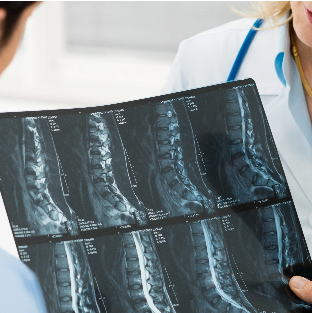Life can take unexpected turns, and for some, spinal trauma becomes an unwelcome reality. The pain, restricted mobility, and fear that accompany such an injury can be overwhelming. However, there is hope. Dr. Jeremy Smith, a highly skilled orthopedic surgeon with a specialization in spine injuries, based in Irvine, CA, is here to guide you on your journey to regaining mobility and reclaiming your life.
Understanding the Pain Points of Spinal Trauma
Spinal trauma can be an incredibly isolating experience. The pain, stiffness, and limited range of motion can disrupt your daily life, leaving you frustrated and anxious about the future. Dr. Jeremy Smith understands the emotional and physical toll that spinal injuries can have. With 18 years of specialized training and a commitment to personalized patient care, he has successfully treated over 10000 individuals in Orange County, helping them regain their mobility and confidence following trauma and spine surgeries.
A True Spine Specialist
Dr. Smith's expertise extends to a wide range of spinal conditions, from scoliosis and sciatica to complex deformities and spinal cord injuries. He employs the latest advancements in orthopedic and neurosurgical techniques, ensuring that you receive the most effective and tailored treatment for your specific situation. Dr. Smith's holistic approach prioritizes both surgical and non-surgical solutions, with an emphasis on conservative management whenever possible.
Spine Mobility Exercises:
Regaining mobility after spinal trauma is a journey that often involves a combination of medical intervention and physical therapy. Dr. Jeremy Smith, an experienced orthopedic surgeon in Irvine, CA, specializes in helping patients recover their mobility and alleviate pain through carefully designed spine mobility exercises. These exercises are tailored to your specific condition and needs.
Why Spine Mobility Exercises Matter:
Spinal trauma can lead to stiffness, reduced range of motion, and muscle weakness, all of which significantly impact your daily life. Spine mobility exercises are a crucial part of the recovery process as they target the affected area while minimizing strain. These exercises serve multiple purposes:
- Alleviating Pain: Spinal trauma often brings along persistent pain, which can be debilitating. Properly designed mobility exercises can help reduce pain and discomfort, allowing you to focus on your recovery.
- Improving Flexibility: Stiffness and reduced flexibility are common after spinal injuries. Mobility exercises are carefully selected to improve your spine's flexibility, ensuring that you can move more comfortably and efficiently.
- Enhancing Strength: Muscle weakness can develop due to decreased activity during recovery. Spine mobility exercises also aim to strengthen the muscles surrounding the spine, providing better support and stability.
Examples of Spine Mobility Exercises:
Dr. Smith's approach to spine mobility exercises is comprehensive, targeting various aspects of your spine's function and health. Some examples of these exercises include:
- Gentle Neck Stretches: These neck stretches are specifically designed to alleviate tension and enhance the flexibility of your neck muscles. These exercises are especially important for individuals in the recovery phase following cervical spine trauma.
- Lumbar Flexion and Extension: These tailored exercises concentrate on the lumbar spine region, aiming to restore mobility in the lower back. They can be particularly beneficial for those recovering from lumbar injuries, as they target the area directly.
- Core Strengthening Exercises: Strengthening your core is fundamental for spine stability. Engaging in core strengthening exercises helps build a solid foundation, ultimately supporting your spine health.
- Leg Mobility Exercises: Leg mobility exercises are crucial for maintaining overall spine health. They are closely linked to spinal health, and specific leg exercises can be recommended to enhance mobility and reduce pressure on the spine during recovery.
How to Realign Your Spine After Trauma
Regaining proper spinal alignment is crucial for improving mobility and overall health after spinal trauma. There are various methods and approaches to achieve this, catering to individual needs and preferences. Here, we'll explore different realignment options, from at-home techniques to professional interventions.
At-Home Spine Realignment Techniques:
- Stretching and Yoga: Incorporating regular stretching and yoga exercises into your daily routine can help improve flexibility and gradually correct minor misalignments.
- Posture Correction: Being mindful of your posture throughout the day and making conscious efforts to maintain a neutral spine position can contribute to realignment over time.
- Ergonomic Adjustments: Making ergonomic changes to your workspace and daily activities can reduce stress on the spine and promote alignment.
Minimally Invasive Surgical Realignment:
In situations where the effects of spinal trauma are more severe, or when conservative, non-invasive methods do not achieve the desired outcomes, the consideration of minimally invasive surgical procedures becomes paramount. Skilled and experienced spinal surgeons like Dr. Jeremy Smith are at the forefront of these advanced surgical techniques, offering effective solutions for complex alignment issues. Minimally invasive surgery is characterized by smaller incisions, resulting in reduced scarring and postoperative discomfort when compared to traditional open surgery. This approach not only aids in realigning the spine but also minimizes tissue damage, shortens recovery times, and enhances the overall patient experience.
How a Surgeon Can Help:
- Precise Diagnosis: Surgeons employ state-of-the-art diagnostic tools to precisely identify the extent of spinal trauma and the specific alignment issues that need attention.
- Customized Treatment Plans: Dr. Smith tailors treatment plans to each patient's unique condition, ensuring that the chosen surgical approach is aligned with individual needs.
- Minimally Invasive Techniques: Utilizing cutting-edge minimally invasive techniques, surgeons work diligently to correct spinal alignment with the utmost precision and minimal disruption to surrounding tissues.
- Reduced Recovery Time: Minimally invasive surgery translates to shorter recovery periods, allowing patients to return to their daily activities and regain mobility more swiftly.
- Pain Management: Surgeons are adept at providing comprehensive pain management strategies to alleviate discomfort during the recovery process.
- Patient Education: Dr. Smith and his team educate patients on postoperative care and exercises to optimize alignment and maintain spinal health.
For individuals facing severe spinal trauma or persistent misalignment issues, seeking the expertise of a skilled spinal surgeon like Dr. Jeremy Smith can be pivotal in restoring proper spinal alignment and overall mobility. Minimally invasive surgical realignment offers a path to recovery that prioritizes both effectiveness and patient well-being.
Conclusion:
Spinal trauma may challenge your physical abilities and emotional resilience, but with the guidance of an expert like Dr. Jeremy Smith in Irvine, CA, you can regain mobility and rebuild your life. Don't let pain and restricted movement define your future. Contact Dr. Smith today to explore personalized solutions, including spine mobility exercises and realignment techniques, to help you overcome the impact of spinal trauma. Your journey to mobility and a pain-free life begins here in Orange County.
FAQs About Regaining Mobility After Spinal Trauma
What is the typical recovery time after spinal trauma?
The recovery time varies depending on the severity of the injury and the chosen treatment approach. Less severe cases may require weeks to months, while more complex spinal trauma can extend the recovery period significantly.
Can I perform spine mobility exercises at home, or should I always consult a professional?
While some spine mobility exercises can be done at home, it's advisable to consult a healthcare professional, such as a physical therapist, to ensure you're performing exercises that are safe and tailored to your specific condition.
Are spine mobility exercises suitable for all ages and types of spinal trauma?
Spine mobility exercises can be adapted for various age groups and spinal conditions. However, it's crucial to consult with a healthcare provider to determine the most suitable exercises for your specific situation.
Are there any potential risks associated with minimally invasive spinal surgery?
While minimally invasive surgery generally carries fewer risks than traditional open surgery, it's not without potential complications. Discuss the risks and benefits with your surgeon, and ensure you understand the procedure's specifics.
How soon after spinal trauma should I start rehabilitation exercises?
The timing of rehabilitation exercises depends on your specific injury and the recommendations of your healthcare provider. In some cases, it may begin shortly after trauma, while for others, it may be necessary to wait until your condition stabilizes.
Are there any specific dietary or nutritional recommendations to support spinal health during recovery?
Proper nutrition plays a crucial role in recovery. Foods rich in calcium, vitamin D, and protein can aid in bone healing and tissue repair. Consult with a healthcare provider or a nutritionist for personalized dietary recommendations.
Can I continue working or participating in physical activities while recovering from spinal trauma?
The ability to work or engage in physical activities during recovery depends on the severity of your injury and your healthcare provider's recommendations. In some cases, modifications or temporary restrictions may be necessary to facilitate healing.

















